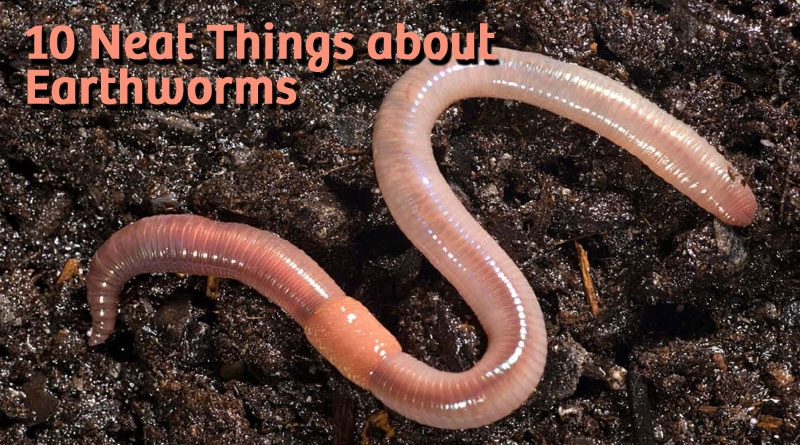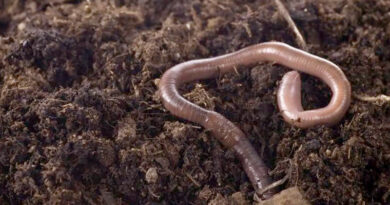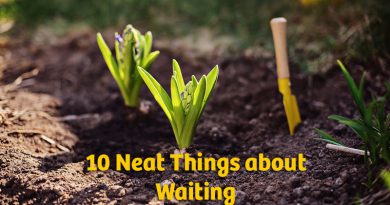About Earthworms
1. Names.
Earthworms are of many different species. The common one we tend to recognize as an earthworm is Lumbricus terrestris, which, although it is found in all the provinces, is not native to Canada. It is also known as a dew worm or a nightcrawler. Aristotle called them “the intestines of the soil”.
2. High school.
If you dissected an earthworm in high school biology class, it was most likely Lumbricus terrestris. The one thing most people remember about the experience is that an earthworm has five “hearts”, or aortic arches. Other than that, it’s pretty much an eating, pooping, reproducing machine. But then, what life form isn’t?
3. What’s good for the garden.
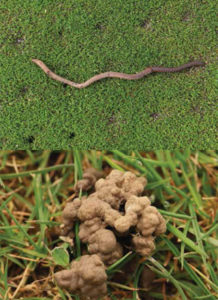
Earthworms are highly beneficial to gardeners and farmers. They add air to the soil by moving through it. In addition, they pull dead organic material like leaves underground from the soil surface, where they shred and eat it; they add nutrients to the soil with their “castings” (poop) of digested leaves and pulverized minerals.
4. Minerals.
The way the minerals get into the castings is this: the earthworm will consume any particles of rock in the soil small enough to fit in its mouth. Inside its gizzard, the particles get ground down to a paste, which is excreted with the organic materials it eats. In the worm-processed form, the minerals, therefore, are easily available to plants.
5. Invaders.
Most of the various earthworms in Canada were imported, many of them by accident. While they have proven extremely valuable to gardeners and farmers, Canadian forests require a slow breakdown of leaves and dead plant matter. Exotic earthworms speed up the process, creating an unsurvivable environment for some native trees and plants.
6. Red wigglers.
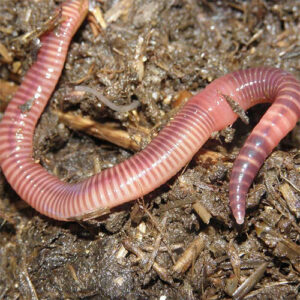
Another exotic species, the Eisenia fetida is the worm of choice for vermicomposting because it is particularly efficient. That efficiency is particularly bad for native forests. This isn’t to say that vermicomposting isn’t a great thing to do; just keep your red wigglers in your worm bin and out of the wilderness.
7. Earthworm birds and bees.
Many earthworms are hermaphrodites: a single worm has both male and female reproductive organs. When they mate, both worms become pregnant (kind of). The male part deposits sperm into a receptacle on its mate. After the conjugal visit, each worm kind of mixes the sperm it received with its own eggs in a cocoon it forms and sheds from the band around its body. (If you’ve ever looked closely at a mature earthworm, there is a wide band about one-eighth of the way down its body from the head. It’s called the clitellum.) Inside the cocoon, about four baby worms develop over about three weeks. In the case of Lumbricus terrestris, those babies can live up to 10 years.
8. Iceworms.
If you’re familiar with the tall tales of Klondike poet Robert Service (“In the shadow of the pole/ Oh, my Heart, my Life, my Soul,/ I will meet thee when the ice-worms nest again”) you may have presumed the iceworm is a flight of fancy. It is not. These creatures, Mesenchytraeus solifugus, inhabit glaciers in Alaska and down the west coast. The are extremophiles that freeze at temperatures below –7 degrees Celsius and melt (literally: they liquefy) at temperatures above 5 degrees Celsius.
9. Regeneration.
Can you double your worm population by cutting them all in half? No. The half with the clitellum might regenerate into a whole worm. The other half is done for.
10. Rain.
So, why do worms come to the surface when it rains? Nobody knows for sure. It isn’t that they will drown in the sodden soil; they’ve been shown to be capable of living for days submerged in water. A couple of good theories are: 1) they can move about more quickly on the surface than underground when it is wet and not sunny; and 2) other microorganisms in the soil respire more rapidly in a moist environment and all that carbon dioxide dissolves into carbonic acid in the water making the soil temporarily too acidic for earthworms.
– Shauna Dobbie Copyright©
Pegasus Publications Inc.



